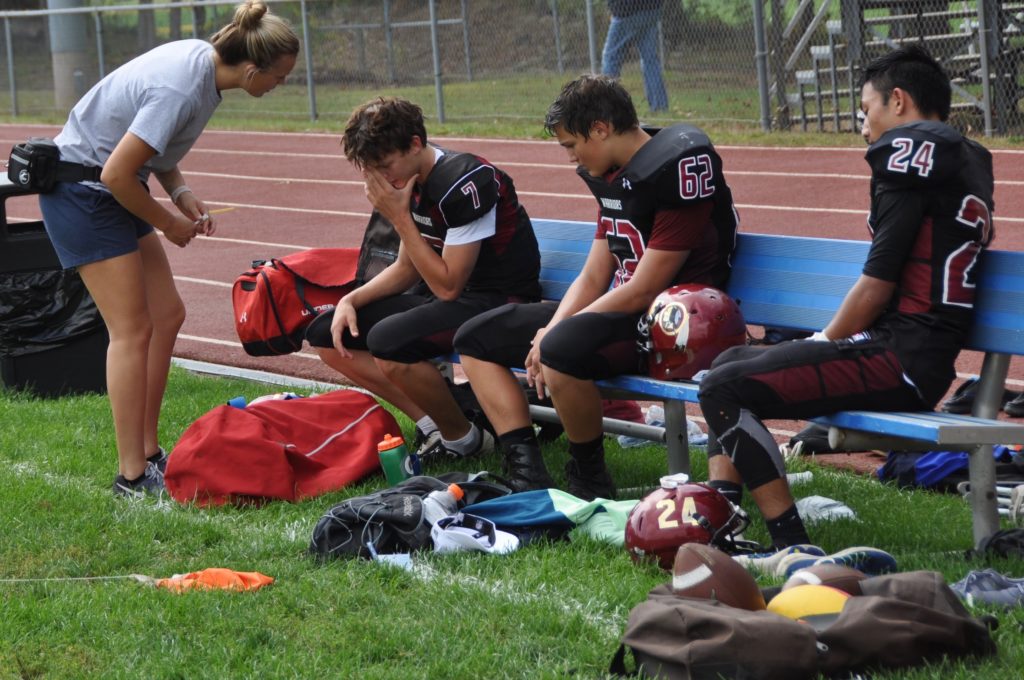
Athletic Trainers and Personal Trainers: is there a difference?
You might have heard of athletic trainers and personal trainers. But what’s the difference? Both of these healthcare professionals play an important role in keeping athletes and individuals healthy and injury-free. We broke down the difference between athletic trainers and personal trainers.
Athletic Trainers
To become an athletic trainer, one must spend years earning a master’s degree from an accredited education program, pass the Board of Certification exam and maintain a valid state license to provide care. As certified, licensed healthcare professionals, athletic trainers are the first ones on the field or court to treat an injured athlete. They are highly-qualified, multi-skilled healthcare professionals who often implement the first line of evaluation using extensive medical knowledge to determine the cause and severity of an injury. They work in conjunction with physicians, paramedics, school nurses, and other health professionals as part of the medical team.
During their schooling, athletic trainers learn how to assess and treat injuries, provide first aid care, and create a complete plan of care for athletes, including nutrition and sports rehabilitation. Common injuries assessed by ATs include concussion, respiratory issues, dehydration, muscle sprains and strains and more severe problems like broken bones, fractures and cardiac-arrest. Once an assessment and preliminary diagnosis has occurred, they can provide immediate treatment (CPR, ice, bandages) or recommend the athlete for further care, such as rest, clinical care, physical therapy or, in some cases, emergency intervention, to ensure an athlete’s safe recovery.
The effect concussions and other head injuries can have on young athletes have made the role of the athletic trainer even more important. ATs can take steps to prevent concussions through training, education, and awareness. After a head injury, they can minimize the symptoms of concussions, and are the first healthcare professionals to observe athletes who might have suffered from one.
The work of an athletic trainer is not over once the athlete has left the field. ATs work with coaches, athletes, families, physicians, physical therapists and emergency crews to evaluate players, set goals and timelines, and create custom rehabilitation programs.
Personal Trainers
Personal Trainers are fitness professionals. They prescribe, monitor and change an individual’s fitness program. While many personal trainers are certified by a national agency, there is no requirement of higher education or certification. They work with clients to achieve fitness goals, and educate the public about the importance of physical activity. They can be found in health clubs, wellness centers and various locations where fitness activities take place.
PTSMC is proud to have both Athletic Trainers and Personal Trainers on staff. Not only do we offer athletic training services in 8 of our CT high schools, we have Personal Trainers in our Simsbury and Wethersfield locations working with our Transitional Rehabilitation program; a program that bridges the gap after physical therapy graduations have passed for our patients looking to keep their progress going!
Have a question? Let us know! Comment on this post or e-mail info@ptsmc.com to reach us!
